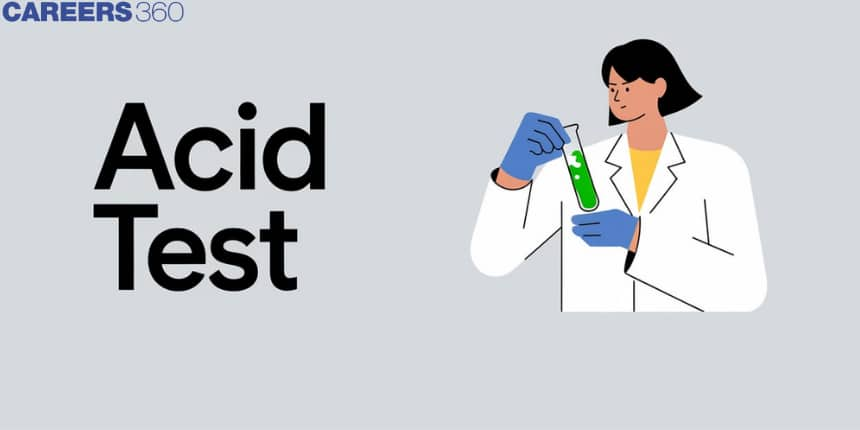Acid Test: Ratio, Test-Experiment, Applications
An acid test is a process in which acid is used to determine the quality of the material present in the samples of minerals and rocks. It is an ancient process that is used for the testing of minerals and this is a regular process. Here in this process, a strong acid is used to identify the gold from the other metals. The name Acid test was coined by Kesay and then it was used by the gold miners in the year 1850. He took the parties to public places and popularized this term. And now it is familiar to almost everyone and it is widely used in the mining of minerals and other industrial applications.
This Story also Contains
- What Is Acid-Test Ratio?
- Acid Test Experiment
- Follow the same pattern for every other sample.
- Applications Of Acid Test

This test is used to determine the performance or characteristics of the substances. It is mainly used for testing gold with the help of small acid concentrates as it is a global metal and is more resistant to corrosion and rusting when compared to other metals. The main reason for applying that to the gold is to remove the gold coating on the rock and give the visible mark.
What Is Acid-Test Ratio?
It is a ratio that is used in firms or companies to identify whether the company has required short-term assets to cover the company’s short-term liabilities. The other name for acid test ratio is “quick ratio”. It is also responsible for identifying whether the company has enough cash to pay short-term debts. Though this test may not give exact results of the company's financial conditions when the company has more receivable accounts than current liabilities. If the ratio is less than 1, it indicates that the firm does not have enough assets to pay the current liabilities. The very high ratio indicates that the cash is idle.
Acid Test Experiment
The steps involved in this experiment are:
Take a piece of paper and make a column with the headings as Fizz, sample and powder.
Then on the left side of the paper keep the heading sample and the list of minerals samples.
Next, pour vinegar into a cup and that can be taken after with the help of an eyedropper.
Then take any mineral sample and place it on the paper towel and pour the little vinegar on it using an eyedropper.
Then observe the outcome and write Yes in the fizz column if we observe any vinegar fizzing or else write No in that column.
If the result is No then use the steel nail and scratch mineral sample. If there is no change, then indicate the mineral is too hard in the powder column.
If the scratch produces mineral powder then continue the above steps and observe the result and write yes or No based on the outcome.
Follow the same pattern for every other sample.
Applications Of Acid Test
There are various applications of acid tests. They are:
Oxbridge applications
Entertainment
Media applications
Art and equipment
Computer and technology
Metallurgical test
Scientific applications
Business applications
Frequently Asked Questions (FAQs)
The strongest acid that is available on the earth is “Fluoroantimonic acid” and it is known as the super acid because of its nature. This acid is twenty quintillion times more and more acidic than 100 percent of sulphuric acid.
The stomach acid test is used to test the parietal cells which are responsible for producing the acid in the stomach. This test indicates how much acid is secreted in the stomach and whether it is producing the required amount of acid or excess levels.
The name acid test indicates that the substances are identified when they are reacting with acids. The rocks that contain carbonate components produce an effervescence when it reacts with acetic or hydrochloric acid.
The litmus test is a general experiment which is used to identify whether the substance is acid or base. The acid substances turn the blue litmus to red and the bases turn the red litmus to blue and there is no change when the litmus papers are reversed for the acids and bases.